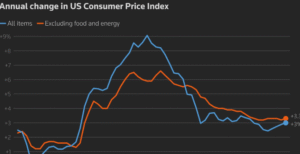$XOM $CVX $BTC
#Oil #BrentCrude #WTICrude #OPEC #OPECplus #EnergyMarkets #CrudeOil #CommodityTrading #OilPrices #GlobalEconomy #FossilFuels #MarketTrends
Oil prices saw a decline on Thursday, reversing modest gains made earlier in the week despite significant announcements from OPEC+. The cartel, along with its allies, revealed plans to delay its previously scheduled output increase by three months, now set for April 2025. Furthermore, the group extended the ongoing unwinding of production cuts by a full year, pushing its conclusion to the end of 2026. Notably, OPEC+ also announced an extension to production baselines—benchmarks critical for determining quotas—for all member nations until the end of 2026. Despite these seemingly strategic moves, market sentiment remained tepid. Brent crude for February delivery dropped by 1.3%, trading at $71.16 per barrel at 11:30 am ET, while U.S. West Texas Intermediate (WTI) crude for January delivery recorded a sharper loss, falling 1.5% to $67.32 per barrel.
Market participants appeared skeptical about OPEC+’s ability to boost prices sustainably amid macroeconomic uncertainties and tepid demand growth. The move to extend baselines and stagger production increases failed to deliver the intended positive impact on investor confidence, with traders citing concerns over softening demand in key markets such as China and Europe. Standard Chartered analysts, in their latest note, flagged the incongruity between production adjustments and anemic demand conditions. A persistent overhang in global inventories poses an additional dampener on oil prices, reinforcing fears that OPEC+ may struggle to balance the market effectively. In the absence of more aggressive production cuts or a notable uptick in demand, prices could remain rangebound or even drift lower in the near term.
The lackluster price performance also highlights broader bearish forces in the energy markets. Rising geopolitical uncertainty, currency fluctuations, and mounting inflationary pressures are reshaping market dynamics, adding further downside risk to crude prices. Moreover, competition from alternative energy sources and ongoing transitions to renewables continue to weigh on the fossil fuels sector. Investors now face a multifaceted landscape where macroeconomic variables such as potential monetary tightening by central banks create additional headwinds. Against this backdrop, oil giants like ExxonMobil ($XOM) and Chevron ($CVX) may encounter compressed profit margins if crude prices remain subdued, echoing trends observed during prior periods of prolonged price consolidation.
Looking forward, the oil market’s trajectory hinges on several key drivers. Any signal of stronger demand recovery from major oil consumers, particularly in emerging economies, could reignite upward momentum. Similarly, disruptions to OPEC+’s supply strategy, whether through non-compliance or geopolitical events, may inject volatility into the market. However, without such catalysts, prices may struggle to climb meaningfully higher. For now, both Brent and WTI crude prices remain vulnerable to external shocks, leaving traders and stakeholders wary of any sustained rallies. As global energy markets navigate these uncertain waters, the focus remains squarely on the delicate balancing act between supply cuts and demand recovery efforts orchestrated by OPEC+.










Comments are closed.